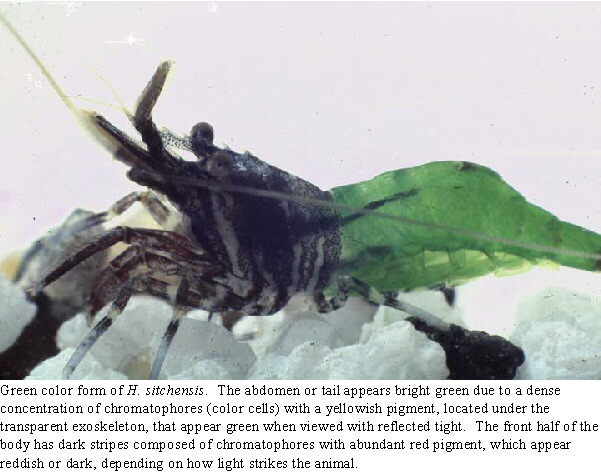
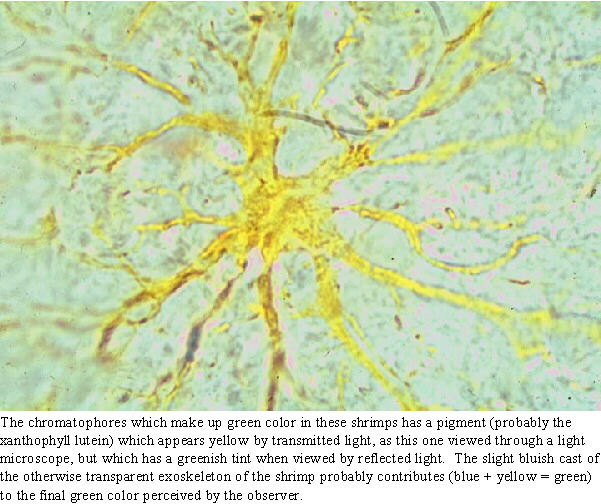
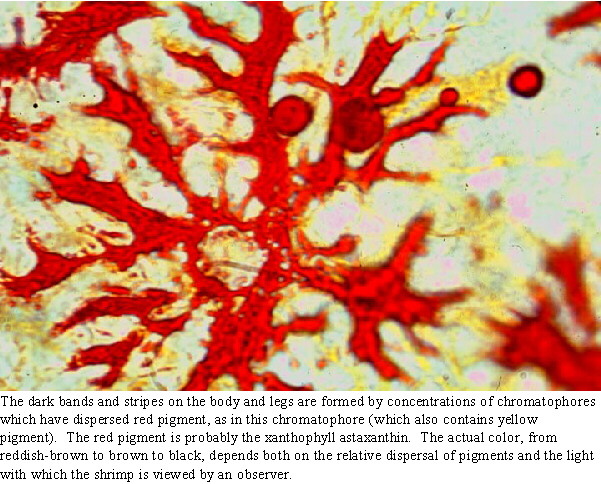
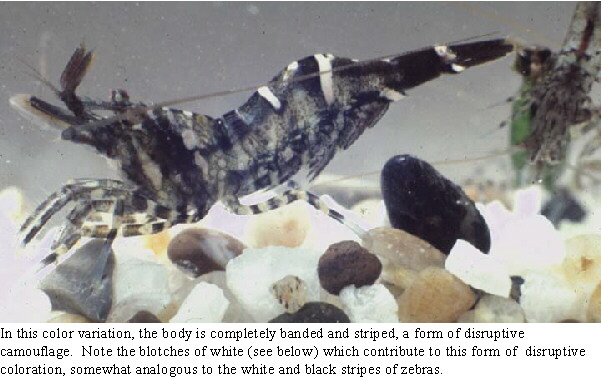
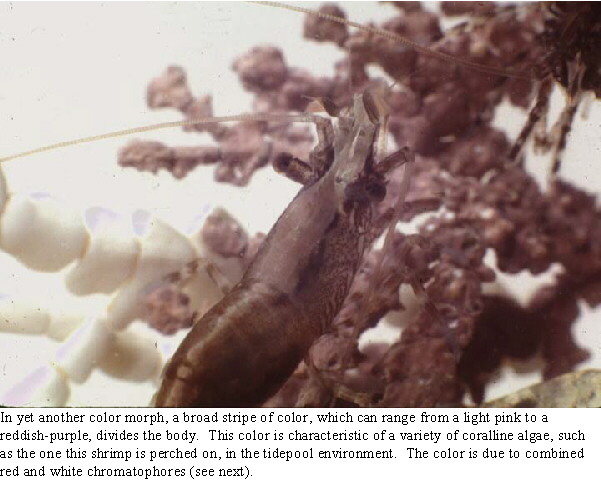
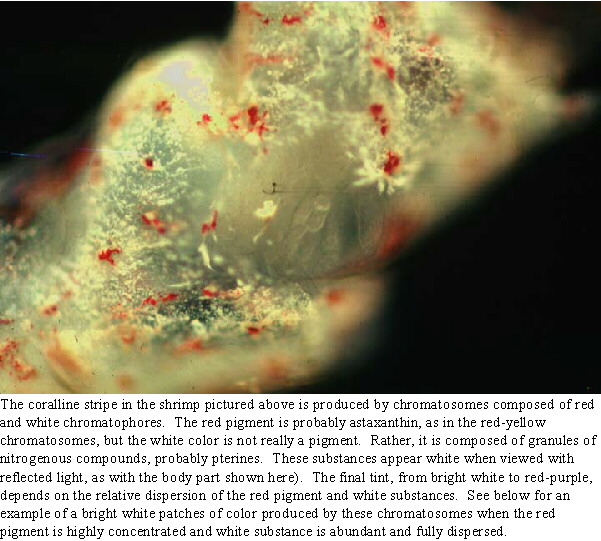
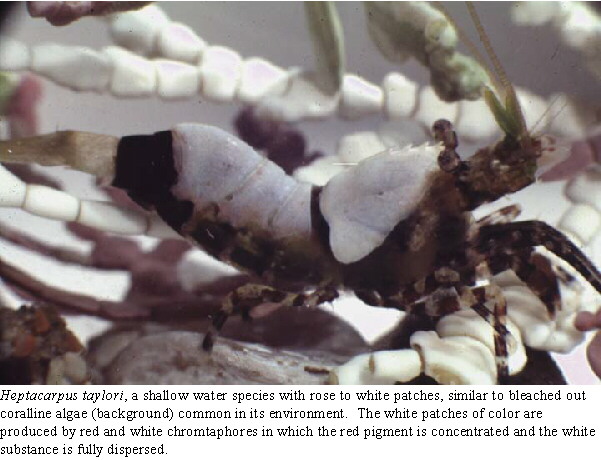







I have studied details of the camouflage coloration, in which several patterns occur, all forms of disruptive coloration, in which stripes and splotches break up the outline of the shrimp, making it difficult to recognize when viewed against a background which is variable in color and tone. The disruptive coloration is a defense against visually-hunting predators such as shorebirds and intertidal fishes. Colors are made up by pigments found in different kinds of color cells (chromatophores), grouped in structures called chromatosomes. Color patterns are poorly expressed in juveniles and small males, rendering them transparent, which is another way to appear invisible to predators using vision. This doesn't work in larger individuals, especially females, since the internal organs and incubated embryos destroy the transparency "trick"; camouflage color patterns then come into play.
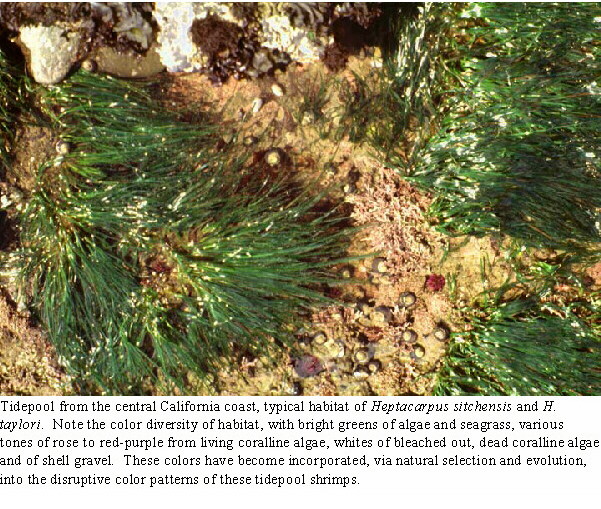
These shrimps do not retain their coloration at night. Below are photos of a green color form of H. sitchensis, taken first a night (left), when the shrimp had been in the dark for several hours, and then just after a 15-minute exposure to light. Note how the color is largely lost at night, due to the concentration of pigments in chromatophores. The pigments disperse rapidly again in the presence of light. The adaptive value of the night "coloration," in which the shrimp loses most color but has a slight bluish tint, is still to be discovered. One hypothesis is that dispersion of pigments requires energy, so the shrimp saves energy at night by having pigments concentrated. Another hypothesis for the color change is that nocturnal transparency is a form of silhouette concealment in which the body outline of the shrimp is less obvious to a predator viewing it from below against a bright night sky.
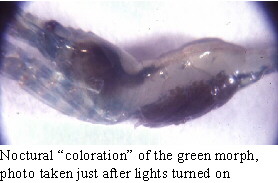
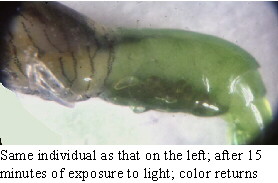
My findings (see Bauer, 1981b, 1982) indicated that the
different color morphs are genetically based in this species and in the
related H. paludicola. The patterns are not a result of gradual
color adaptation to the background, as in the European littoral shrimp,
Hippolyte
varians. I also found that the genetic color patterns of Heptacarpus
are not expressed in nature if the natural background has low color or
tonal diversity. However, very few studies have been done on camouflage
coloration in shrimps. This is yet another area which needs work (and is
aesthetically pleasing as well).
Back to Home Page